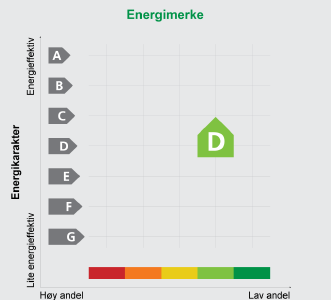Building standards have a long history in Norway, and the first energy requirements for buildings were introduced as far back as 1949. The Ministry of Local Government and Regional Development is responsible for determining the requirements of the Technical Regulations on buildings.
The Technical Regulations apply to new buildings and when large-scale renovation and alterations are carried out on existing buildings. The regulations set minimum standards that must meet for the construction to be legal. These minimum standards include requirements relating to energy use in buildings. New buildings correspond to only about 1-2 % of the building stock per year. However, buildings have a long lifespan, and the energy requirements will therefore influence energy use for many years to come. Norwegian energy requirements have been revised and made stricter a number of times, most recently from 1 January 2016.
Historically, oil-fired heating has been used in both residential and other buildings, while fuelwood has mainly been used in private homes. In recent years, there has been a switch from fossil energy sources to electricity, district heating and heat pumps for heating purposes in buildings. This energy switch is a result of high taxes on emissions and support schemes in combination with the prospect of a ban on oil-fired heating. The ban was introduced in 2020.
Traditionally, oil-fired heating and fuelwood have been a widespread local energy solutions and have functioned well together with the electricity system. To ensure the smooth functioning of the energy supply system as a whole, it will be useful to find new heating solutions that do not strain the electricity system in winter.
Mandatory connection to district heating
A sufficiently large number of customers is required for a district heating system to be developed for an area, since the cost per customer drops as capacity is more fully used. In, Norway, a municipality is entitled to require new buildings to be connected to a district heating system when a district heating license has been issued.
Ministry of Local Government and Regional Development and the Ministry of Energy has published guidelines explaining how municipalities can use requirements for mandatory connection to a local district heating system for new buildings. They emphasize that the municipalities can modify the requirements to suit local conditions, for example by specifying which types of buildings are to be connected or defining the geographical areas where the requirements apply. The district heating companies are responsible for providing municipalities with the information they need in order to make good decisions on mandatory connection. This is to make sure that the municipal planning process is as effective as possible.
Since 1 July 2010, it has been mandatory in Norway to hold an energy performance certificate for any building that is constructed, sold or rented out. The energy performance certificates are intended to improve knowledge and awareness of energy use in buildings. Inspection of large heating, ventilation and air conditioning systems has also been made mandatory to encourage sound operation and inspection routines. Owners of private homes may choose to use a free online system for obtaining energy certificates for buildings, while commercial buildings and new buildings must be certified by an expert.
The heating rating (the colour scale) on the energy performance certificate indicates the extent to which the building can be heated (rooms and hot water) by energy carriers other than fossil fuels and electricity.
The energy efficiency ratings on the certificate are between A (high energy efficiency) and G (low energy efficiency). The rating gives an overall assessment of the building’s energy performance, i.e. energy in kWh required per square meter. The rating process applies standard values for factors such as number of residents, indoor temperature, and air quality. The energy rating is based on an estimate of delivered energy and is independent of actual measured energy use. Buildings that meet the requirements of the 2010 Technical Regulations will normally be rated C, while older buildings built in accordance with less strict regulations will have lower ratings. Low energy buildings and passive houses with efficient heating systems can achieve the rating A or B.
Ecodesign and energy labelling establish minimum requirements for energy efficiency and eco-friendly design. NVE is market surveillance authority for eco-design and energy labeling related to energy efficiency.
More information on ecodesign and energy labelling can be found here.


